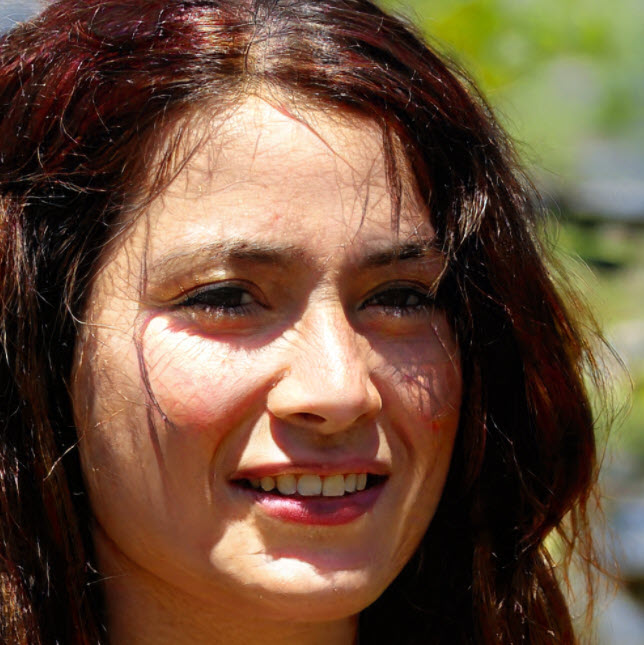Unlock Your Nikon D850's Potential: Learn How to Change Aperture Now!
The Nikon D850 is an excellent camera for photographers of any level, from experienced professionals to amateur hobbyists. This sophisticated device has a range of features designed to enhance your creative potential - and one such feature is the ability to manually adjust aperture settings. Aperture can be used for many purposes in photography including controlling exposure levels, altering depth-of-field and influencing artistic effects like bokeh. In this post we will explain how you can make manual changes to the aperture settings on your Nikon D850 so that you too can take advantage of its full capabilities when shooting photos!
Introduction to Aperture
The aperture is an important setting when it comes to photography, as it controls how much light enters your camera. If you have a Nikon D850, then understanding the basics of adjusting your aperture can give you greater control over the exposure and quality of your images. This article will provide an introduction to changing the aperture on a Nikon D850 so that you get great looking photos every time!
Understanding the F-Number System on the Nikon D850
The F-number system is a fundamental part of understanding how to use the Nikon D850 camera. The F-number determines both aperture and shutter speed, which are two key components in creating beautiful images. To change the aperture on your Nikon D850, start by turning it on and press either “S” or “A” depending on your preference for manual or auto settings. Then select ISO (sensitivity) value, zoom setting then turn dial button clockwise/counterclockwise to choose desired f stop number(aperture). This can range from f1 -f36; higher numbers mean smaller openings while lower represents bigger opening thus give different result regarding depth of field effect . One important thing to note is that when changing between modes you should always keep pressing down the shutter release half way as this saves all changes made before switching modes within same exposure mode such as Aperture Priority AE +/- EV Compensation items etc…
Using Manual Mode to Change Aperture
Using Manual Mode to change the Aperture on a Nikon D850 is an essential step in getting the perfect exposure. When shooting with manual mode you are able to make precise adjustments of your camera’s settings, allowing for creative control over how much light enters through the lens and into the camera sensor. To adjust aperture when using Manual Mode on a Nikon D850 first select M (Manual) from atop your dial, then set F-stop—this number indicates how open or closed your iris will be, which affects depth of field—using either shutter speed button (marked +/-). Rotate its collar until desired f/value appears; press it lightly three times afterward as triple click confirms setting. After that check LCD screen upper right corner: If dotted line shifts up & down after each click confirmation – changes took effect!
Using Auto and Program Modes to Change Aperture
When using a Nikon D850, you can easily adjust aperture settings in either auto or program modes. In auto mode, the camera will set optimal settings based on scene conditions. You can usually override these choices by pressing "i" and then selecting your desired aperture from the range of available options in the menu that appears on-screen. Program mode is more hands-on; once activated via the main switch dial, you'll be able to manually select an aperture value just like with manual mode but without having to worry about exposure compensation. This makes it great for those who want to get creative while leaving some control up to their machine's AI!
Using Priority Modes to Change Aperture
Using the Nikon D850's priority modes is a great way to quickly and easily adjust your aperture in order to get the perfect exposure. If you want full control of how much light reaches your camera’s sensor, then manually adjusting the aperture setting will give you that flexibility. To use this feature on your Nikon D850, simply select either Aperture Priority (A) or Program Mode (P). In both these modes, all other settings such as ISO and shutter speed are adjusted automatically so that they work with what you have set for aperture. Once activated, turning the command dial until it says ‘f/stop’ allows for manual adjustment of the f-number up or down depending on which direction you turn it. For example if you need more depth of field increase f-number e.g from 4 – 5 etc., while less depth requires decreasing f-number - 4->3.. This can be done without ever having to leave one of those two priority modes!
Using Scene Modes to Change Aperture
One of the most exciting features on Nikon’s new D850 is its ability to change apertures with scene modes. This is great for photographers that want more control over their compositions or if they are looking to capture movement or add creative blur in unique ways. When using Scene Modes, users can access options such as Auto Aperture Choose which will automatically select the proper aperture setting based on your current shooting situation. Additionally, you can easily switch back and forth between manual and automatic settings with just few clicks while still keeping composition parameters intact throughout all changes. With any luck this guide has helped you learn how to successfully use Nikon's new Scene Mode feature when changing apertures on your D850!
Conclusion
In conclusion, changing the aperture on a Nikon D850 camera is an important skill for any photographer. Scene modes and manual mode are both great options to achieve different effects in your images. Understanding how these two settings work together will help you make better creative decisions when adjusting your aperture to capture that perfect shot. With some practice, you can become a master at controlling the depth of field and other aspects of exposure control with ease!
